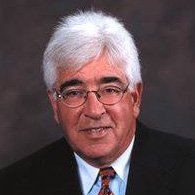Second Visit Treatment Consultations for a Precipitating Event
February 15, 2018
There are two kinds of precipitating events that are seen in your practice all the time. The first would be classified as an emergency – a patient calls because something is broken or is painful. The second would be a new or existing patient seen in the Hygiene room and the examination reveals decay or a periodontal problem. In both of these cases, treatment is required. There are negative and significant consequences to not performing treatment. Something must be done.
If the problem is isolated to a single tooth, the diagnosis is made when you see the patient, and the patient will be appointed for treatment. Usually there would be no need for a second visit to present treatment choices. BUT – If there is the possibility or potential for doing two or more indirect restorations within the quadrant or the arch where the precipitating event occurs – I recommend a no charge second visit for the patient to return to the office so that you have the opportunity to present choices. In dollars, that would be a minimum of usually $2500-$3000.
In preparation for that visit, take some diagnostic study casts, necessary x-rays and a few digital pictures – all at no charge – to help you prepare for the treatment choices you offer. You say to the patient “ Mrs. Jones – I want you to come back next week so that I can discuss your treatment options with you.” Now to the patient who has that broken tooth, or decay under an existing filling, they usually say “But Doctor – what are we going to talk about? I need you to fix my tooth.” DON’T say that we are going to discuss fixing those two other heavily restored teeth that are right next to the one that is broken. That NEVER works! And it does not work because the patient is distracted and concerned about only the tooth that is damaged. So they say “no doctor – let’s just fix the one that is broken.We can worry about those others later.” Because you try to present treatment choices at this initial visit, you fail and you end up being a one tooth at a time dentist – over and over again.
Instead, your answer to the patient when asked “what are we going to talk about” should be “you know, I am not sure. I want to study these x-rays and models and photographs to see why this happened – and when you come back, I will know your case by heart.” Those are the magic words! I learned them 25 years ago from the great Dr. Paul Homoly who was masterful at getting patients to say yes to treatment. I promise you those words are just as effective today as they were back then.
The only thing you do at this initial visit is palliative treatment – smooth a rough edge or put in a temporary sedative filling material. Take your photographs and study casts and re-appoint the patient for a 25 to 30 minute visit. Next week, I plan to send you a recording of a typical three choices of treatment presentation for a precipitating event. When you hear this, I hope you will be able to see the many positives of presenting treatment in this fashion.
No Comments
No comments yet.
RSS feed for comments on this post.
Sorry, the comment form is closed at this time.

